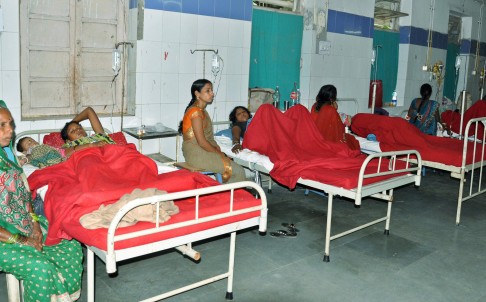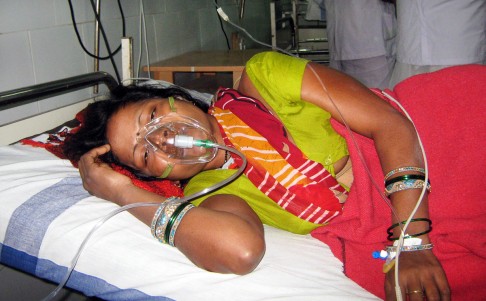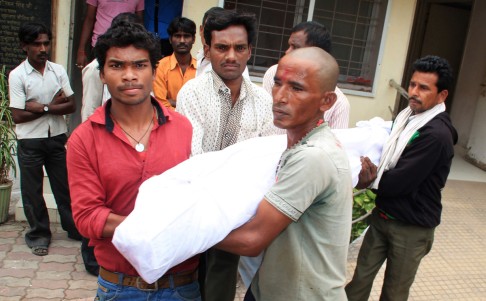Indian women risk lives by accepting US$10 to undergo sterilisation
Sterilisation programme targets the poor, often with fatal consequences
PUBLISHED : Wednesday, 12 November, 2014, 10:58am
UPDATED : Thursday, 13 November, 2014, 4:13am
Bloomberg in Bilaspur District

Women in Chhattisgarh state receive treatment after undergoing sterilisation. Photo: AP
Soni Jangde felt good when she returned home after getting sterilised in central India on Saturday: She had 600 rupees (HK$75) in her hand and a belief that she was doing the right thing for her young family.
A few hours later, the 23-year-old mother of three got a headache, followed by abdominal pains and vomiting. She assumed it was a normal side effect until Chhattisgarh state officials came to her village and rushed her to the hospital. Of the 82 women sterilised with her, 13 have died and more than 60 are being treated in hospital.
"We are completely afraid," Jangde said from her hospital room, with her six-month-old baby and husband by her bed. "With this kind of treatment the government is playing with the lives of women and poor people like us."

A victim receives treatment on a hospital bed. Photo: EPA
The cause of the deaths was not immediately clear, but officials said the victims showed signs of toxic shock, possibly because of rusty or dirty surgical equipment or contaminated medicines.
Raman Singh, Chhattisgarh's chief minister, pinned the blame on the surgeon, R.K. Gupta. He has been suspended and is facing a criminal investigation.
The tragedy is one of the worst in recent memory from the one-day sterilisation drives India regularly holds to keep its 1.2 billion population from growing too fast. Married women are the most at risk: While more than a third of them are sterilised, only 1 per cent of men have had a vasectomy, according to a 2006 National Family Health Survey.

Men carry the body of one of the victims. Photo: EPA
"There's disproportionate pressure on women to be sterilised versus men as it's easier for a health worker to get in touch with a woman when she has a baby," said Kerry McBroom, head of the Reproductive Rights Initiative at Human Rights Law Network in New Delhi, which has sued to improve conditions at sterilisation clinics. "Also it's a patriarchal society. Men haven't been involved in the family planning discussion."
In 2007, India increased incentives for women to undergo sterilisation, and focused efforts on Chhattisgarh and other underdeveloped states. India now has the world's third-highest female sterilisation rate after the Dominican Republic and Puerto Rico among more than 180 countries tracked by the UN.
Additional reporting by Reuters
